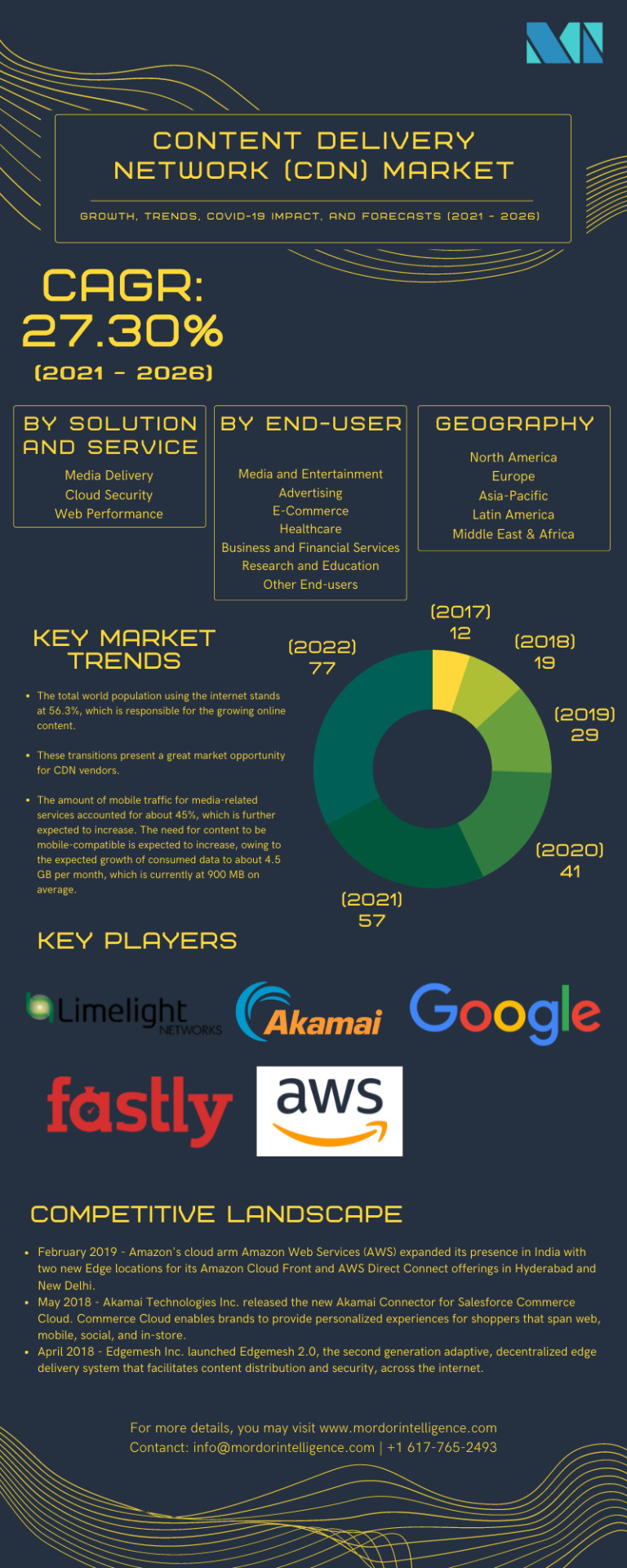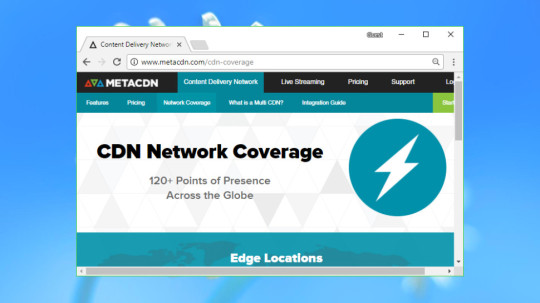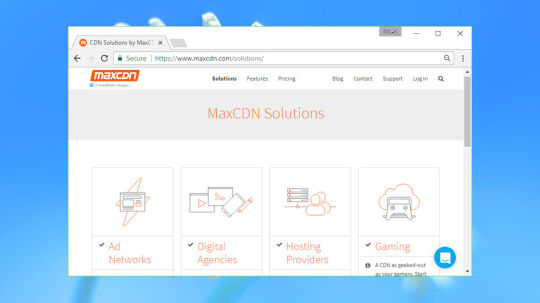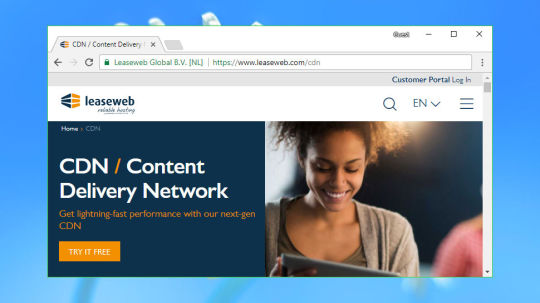#ContentDelivery
Text
Maximizing Website Efficiency: Understanding the Significance of Content Delivery Networks (CDNs)

In today's digital world, a website's success largely depends on its efficiency and reliability. With the increasing number of internet users worldwide, website loading speed and accessibility have become critical factors that can either attract or drive away potential customers. This is where Content Delivery Networks (CDNs) come into play.
A CDN is a network of servers located in different parts of the world, which work together to deliver web content to users efficiently. Instead of relying on a single server located in one location, CDNs store website content on multiple servers across the globe. When a user requests to access a website, the CDN automatically directs them to the server nearest to their location, reducing the time it takes to load the website.
Here are some reasons why CDNs are crucial for any online business:
Enhanced Website Loading Speed: CDNs enable faster website loading speed by reducing the distance between the user and the server. This results in an improved user experience, as users are more likely to stay on a website that loads quickly. In turn, this leads to increased customer engagement and conversions.
Increased Website Reliability: CDNs distribute web traffic across multiple servers, ensuring that the website remains accessible to users, even if one server fails. This improves website reliability, making it less likely that users will encounter errors or downtime.
Improved Website Security: CDNs can help improve website security by providing protection against DDoS attacks and other security threats. CDNs can identify and block malicious traffic before it reaches the website, keeping it safe from potential attacks.
Better Search Engine Optimization (SEO): Website loading speed is a crucial factor for search engine optimization, and CDNs can help improve a website's search engine ranking by providing faster loading speeds. Search engines like Google prioritize fast-loading websites, so using a CDN can help businesses improve their SEO rankings.
In conclusion, Content Delivery Networks (CDNs) are essential for maximizing website efficiency, reliability, and security. By utilizing a CDN, online businesses can ensure that their website loads quickly, is accessible to users from all over the world, and is protected from potential security threats. Ultimately, this can lead to increased customer engagement, conversions, and business success.
#CDN#WebsitePerformance#WebContent#WebsiteLoadingSpeed#WebsiteReliability#WebsiteSecurity#DDoSProtection#SearchEngineOptimization#SEO#OnlineBusiness#WebsiteOptimization#UserExperience#InternetInfrastructure#WebTechnology#ContentDelivery#ServerNetworks#WebsiteAccessibility#CustomerEngagement#WebsiteConversions#BusinessSuccess
2 notes
·
View notes
Photo

I Guess 🤤🙆🏽♂️😍 #pfsblJofficiallyReal #FacebookMarketing #MixingMastering #JofficiallyReal #ContentDelivery #ArtisteAwareness #JofficiallyRealpfsbl #ContentAssets #HighQuality #JuiceOfficiallyReal #NetworkMarketing #OfficiallyReal #GamingPlatform #ContentNetworking #PFSBL #GeographicMarketing #OfficiallyRealpfsbl #GlobalConnection #ForTheCause #pfsblJofficiallyReal #Interconnectedness #pfsblOfficiallyReal #SocialGaming #PubGTrinidad #StrategicPlanning #BeyondTheLost #JuiceOfficiallyRealpfsbl #EndorsementMediums #EBSProject #ProductService https://www.instagram.com/p/CllmmOlui7n/?igshid=NGJjMDIxMWI=
#pfsbljofficiallyreal#facebookmarketing#mixingmastering#jofficiallyreal#contentdelivery#artisteawareness#jofficiallyrealpfsbl#contentassets#highquality#juiceofficiallyreal#networkmarketing#officiallyreal#gamingplatform#contentnetworking#pfsbl#geographicmarketing#officiallyrealpfsbl#globalconnection#forthecause#interconnectedness#pfsblofficiallyreal#socialgaming#pubgtrinidad#strategicplanning#beyondthelost#juiceofficiallyrealpfsbl#endorsementmediums#ebsproject#productservice
6 notes
·
View notes
Text
Agile Content Management Systems (CMS) are software platforms that enable organizations to create, manage, and deliver digital content in a flexible and iterative manner. These systems are designed to support the principles and practices of Agile methodologies, which emphasize collaboration, adaptability, and continuous improvement.
#AgileCMS#ContentManagement#DigitalContent#Flexibility#IterativeApproach#Collaboration#Adaptability#ContinuousImprovement#AgileMethodologies#ContentCreation#ContentDelivery#FlexibleContent
0 notes
Photo

Get ahead of the competition with our expert OTT app development services! We can help you create a seamless and user-friendly platform that will elevate your brand's digital presence and connect you with your audience like never before.
Get in touch with us today to start your project 💻
👉 Visit-: www.digitalbrain.co.in
👉 WhatsApp Us-: wa.me/919818805835
#OTTappdevelopment#digitaltransformation#appdev#streamingplatforms#AppDevelopment#VideoStreaming#OTTPlatform#VideoOnDemand#OTTDevelopment#OTTApps#OTTConsulting#OTTMedia#ContentDelivery#ContentDistribution#MobileAppDevelopment#VideoApps#digitalbrainmedia#ITcompany#StreamingServices
0 notes
Text

YardStream is excited to announce its participation in GITEX 2023, one of the year's largest technology exhibitions.
Join us at our booth to learn about our newest streaming technology breakthroughs, network with industry professionals, and see the future of content delivery. Keep an eye out for updates, demos, and special insights. See you at GITEX 2023!
Contact us on:
𝐂𝐚𝐥𝐥/𝗪���𝐚𝐭𝐬𝐚𝐩𝐩: +916370189745
𝐌𝐚𝐢𝐥: [email protected]
#YardStream #YardStreamLive #GITEX2023 #YardStreamATGitex #FutureOfStreaming #StreamTheFuture #YardStreamInnovation #ContentDelivery #GITEXTech #NextGenStreaming
2 notes
·
View notes
Text
Optimizing Content Delivery: The Role of Application Delivery Networks
Application Delivery Networks (ADNs) play a pivotal role in ensuring seamless and efficient delivery of web-based applications and services to users across the globe.
These sophisticated networks act as intermediaries between clients and servers, employing a range of advanced technologies such as load balancing, caching, and content delivery networks (CDNs) to optimize the performance and reliability of application delivery. By strategically distributing content and resources across geographically dispersed servers, ADNs minimize latency, accelerate content delivery, and mitigate the impact of network congestion, ensuring consistent user experiences regardless of location or device. Moreover, ADNs enhance security by implementing measures such as web application firewalls (WAFs), distributed denial-of-service (DDoS) protection, and SSL/TLS encryption to safeguard against cyber threats and ensure data integrity. Furthermore, ADNs provide scalability and flexibility, allowing organizations to scale their application delivery infrastructure in response to fluctuating demand and traffic patterns. As organizations increasingly rely on web-based applications to drive business operations and engage with customers, ADNs emerge as indispensable components of their digital infrastructure, ensuring fast, secure, and reliable access to applications and services in today's dynamic and competitive digital landscape. #ApplicationDeliveryNetwork #ADN #ContentDelivery #WebApplications #PerformanceOptimization #Security #Reliability #CDN #LoadBalancing #LatencyReduction #DDoSProtection #Cybersecurity #Scalability #Flexibility #DigitalInfrastructure #Technology #Innovation
0 notes
Text
Navigating the Hyper-Speed Lanes: A Forecast for the Content Delivery Network Market 2024-2033
The Content Delivery Network (CDN) market is poised for exponential growth, with forecasts projecting a surge from 2024 to 2033. As digital consumption continues to skyrocket across various sectors, CDN services are becoming indispensable for businesses striving to deliver seamless and lightning-fast content to global audiences. With an expected compound annual growth rate (CAGR) of X% during this period, the CDN market is set to reshape the digital landscape, catering to the evolving needs of enterprises, e-commerce platforms, media companies, and beyond.
Driven by the demands for high-quality video streaming, online gaming, e-commerce transactions, and cloud-based services, the CDN market is witnessing a paradigm shift in its dynamics. Innovations in edge computing, artificial intelligence, and IoT integration are propelling CDN providers to offer more efficient, secure, and scalable solutions. Additionally, the rise of 5G technology promises to revolutionize content delivery, further fueling the adoption of CDN services. As the market becomes increasingly competitive, providers are focusing on enhancing their infrastructure, optimizing delivery algorithms, and expanding their global footprint to meet the escalating demands of the digital era.
#CDN #DigitalTransformation #EdgeComputing #5G #Streaming #IoT #CloudServices #OnlineGaming #ECommerce #TechTrends #GlobalExpansion #Innovation #DigitalEconomy #ContentDelivery #FutureTech
0 notes
Text
77Million’s Content Marketing Services

The industry’s biggest players are advertising agencies that create effective content, embed that with advertisers’ brands, and create sell ads on those pages. 77 Million’s content marketing services ensure that companies make the right strategic choices based on the right information delivered fascinatingly.Dive deeper with content and its stretch on the online platform at https://bit.ly/3AdYh08.
#contentmarketing#contentcreation#contentmanagement#contentdelivery#concentmarketingservices#advertising#77million
1 note
·
View note
Photo

The content delivery network (CDN) market was valued at USD 11.76 billion in 2020, and it is expected to reach a value of USD 49.61 billion by 2026, at a CAGR of 27.30%, over the forecast period (2021-2026). Growing demand for rich video content, among the increasing online users, and the trend of digitization in organizations across the end-user verticals boost the overall CDN market demand.
To Know More - https://bit.ly/36imm8x
0 notes
Text
Best CDN providers of 2019 to speed up any website


A content delivery network (CDN) works to accelerate almost any website by caching its files in servers around the world. Whether your visitors come from Europe, North America, Asia or anywhere else, content is automatically served from the nearest location for the fastest possible speeds.
If you're new to the technology then it might seem intimidating, and there's no doubt that prices can be high, but don't let that put you off. A CDN is not just for massive corporations. You can set up the simplest services in less than five minutes, and if you choose your plan wisely, it might not cost you anything at all.
Whatever your website, from a simple blog to a sprawling site for a big business, we've picked out some of the best services around to help point you in the right direction. If you find anything that looks interesting, give it a try – you can explore many of these CDNs for free, without handing over payment details or signing up for any contract.


Cloudflare is a hugely popular American content delivery service which combines novice-friendly ease of use with expert-level features and functionality.
Setup is simple, with no need to edit your code. Just update your DNS nameservers to use Cloudflare and the service kicks in automatically, caching content and serving it to visitors from their nearest location.
But there's much, much more. Web filtering can block bots, limit content spam, keep you safe from hackers or detect and mitigate DDoS attacks. Smart image optimizations can reduce image file sizes by up to 35%, further improving speeds. There's wide support for standards like IPv6, HTTP/2 and SPDY, clever page rules to help you manipulate traffic, and a REST API allows developers to take full control of what the service is doing.
Cloudflare's free plan allows you to see what the service can do, without making any commitments. It's very usable, with unlimited bandwidth and no annoying restrictions to try and force you to upgrade.
Upgrading to the Pro plan costs a reasonable $20 (£16) a month, and adds the image optimization rules, extra configurability and improved support.
Whatever you choose, Cloudflare delivers great performance. As we write, the benchmarking site CDNPerf ranks Cloudflare at seventh place for worldwide HTTP request response times out of a field of 20 top CDNs.
You can sign up for Cloudflare here


Fastly provides CDN tricks for some really big organizations, including the likes of Spotify and Reddit, and the firm lives up to its name, delivering impressively fast performance levels. Going by the rough guideline of CDNPerf’s rankings, it’s the second fastest CDN for the UK, and worldwide speeds are mostly good, too.
Perhaps Fastly’s strongest point, however, is just how configurable the service is. For example, there’s diverse support for different types of video caching, and tons of low-level controls for those who want to get stuck into the likes of manipulating HTTP headers to customize how content is served.
Of course, some know-how is required to set up everything, and novices to the CDN world will doubtless be confused by all the options on offer. But for those who need this level of flexibility and configurability, it’s priceless to have.
Speaking of which, Fastly operates a pay-as-you-go model with a minimum charge of $50 (£37) per month. In addition, you can test up to $50 of traffic for free.
You can sign up for Fastly here


KeyCDN is an easy-to-use budget CDN that might be a good pick for first-time users.
Getting started couldn't be much simpler. Sign up with your email address and you get an immediate 25GB to play with, no payment details required. A well-designed web dashboard enables creating your first zone with the minimum of clicks, and there are guides to help you integrate the service with WordPress and other apps.
Worth mentioning is that as of late November 2018, KeyCDN fully supports IPv6.
More experienced users will appreciate options like Origin Shield – this allows you to specify a KeyCDN server to be the source for updates rather than the origin, reducing your server load. You're able to manipulate headers, cache or strip cookies, or set up a custom robots.txt. Once the service is running, a capable set of reporting tools enable watching CDN performance in near real-time. Also, all customers have access to the Image Processing feature, which is great for image optimization.
KeyCDN's standout feature has to be its low prices. Bandwidth charges start at $0.04 (£0.032) per GB, less than half the price you'll pay with some of the high-end competition. The minimum usage is a tiny $4 (£3.2) per month and the minimum payment is $29 (£23.3). The company doesn't even try to cash in on the extras, for example offering shared SSL and custom Let's encrypt SSL certificates for free.
Perhaps unsurprisingly, these low prices don't get you leading-edge performance, but there's still plenty of power here and you do get a lot for your money.
You can sign up for KeyCDN here


MetaCDN is an Australian company which combines the CDNs of Amazon Cloudfront, Fastly and Verizon's EdgeCast into a single speedy service.
Why? It's all about performance. When a visitor accesses your site, MetaCDN has three networks and more than 120 locations to choose from – way more than anyone else. In other words, there’s a much greater chance any visitor will have a server near them.
This matters because every CDN delivers its best performance in different areas. EdgeCast scores highly in North America, for instance, but Fastly is quicker in the UK. MetaCDN automatically chooses the best network for every visitor's location, giving you the best of all worlds.
This approach does have a catch. When you sign up with a single CDN, you can get access to all its individual settings and options, but combining three means you only get settings which apply to all of them (for obvious reasons). Which essentially means MetaCDN has barely any configuration options at all. (Check the Support site to get a rough feel for how the system works.)
Still, MetaCDN is nicely user-friendly and it could be a good pick if speed is your top priority. Pricing is complicated (although not bad for access to enterprise-level CDNs) and there are three plans, Basic, Lite and Pro. The most popular one, Lite, is $50 on a monthly basis (you can also choose a yearly rate, for a $39 a month).
You can sign up for MetaCDN here


This CDN provider focuses mainly on the West, with 14 points of presence (PoPs) in North America, and nine in Europe. There are only five PoPs in Asia, and two in Australia and South America (Brazil).
StackPath is user-friendly, complete with a straightforward web console to manage your settings, and if you do get stuck, there’s extremely efficient technical support available via either live chat or phone.
Performance seems good in the US and UK, and indeed Europe, but further afield you may see things tail off a bit, which is hardly a surprise given StackPath’s aforementioned focus on Western nations.
Another strength here comes on the security front, with this CDN giving users free shared SSL (or the option to use your own SSL certificate, if you prefer). There’s also anti-DDoS technology and a capable Web Application Firewall.
All in all, this is a tempting offering with a baseline plan that charges $10 (£7.6) for up to 1TB of bandwidth per month. The first month is also free.
You can sign up for StackPath here


Update: The service has been now integrated with StackPath - "Everything you love about MaxCDN is being integrated into the new StackPath CDN service."
MaxCDN is actually owned by StackPath now (the previously mentioned CDN) but provides a standalone service of its own which is well-suited for novices. You get 24/7 tech support with speedy responses promised (and indeed these claims stood up to our testing), and it’s easy enough to set up, and indeed use going forward.
You don’t get as many settings to play with as some of the more advanced services, but that’s hardly surprising when trying to keep things more user-friendly.
Another definite benefit is a range of useful reports and a solid core network. MaxCDN offers eight edge locations in the US, five in Europe – and you can add additional locations in Asia (and Australia), but you have to pay extra for those.
Overall, though, pricing is a strong point, starting from $9 (£6.75) a month for a 100GB account, with a clear pricing structure which isn’t confusing in the slightest (often not the case with CDN offerings). Performance is, generally speaking, solid enough, and this CDN does pretty well for speeds in the UK and US.
You can sign up for MaxCDN here


Amazon CloudFront is the CDN facet of AWS (Amazon Web Services), so it’s certainly part of a heavyweight operation. And indeed CloudFront offers a raft of advanced features as you might expect, and you can customize all manner of things such as enabling automatic GZip compression for better speeds.
Another strength here is the in-depth analytics on tap, showing you details of your visitors’ device type, OS and so forth. There’s also the handy ability to set up alerts, meaning you can be warned when data transfer usage goes above a certain level.
The downside to all the options on offer is that relative novices to the CDN world may find CloudFront’s control panel a little intimidating, at least initially.
The other slight sticking points are that calculating pricing can be a rather tricky matter, and if you aren’t an experienced user familiar with CDN basics, tech support isn’t free – if you need help, you’ll have to fork out for it. Prices vary depending on region, but the good news is there’s a free tier (which gives you 50GB of data per month for one year).
Performance levels are fairly average, too, but there’s no denying the power and configurability that Amazon offers to the slightly more tech-savvy user.
You can sign up for Amazon CloudFront here


As you’re doubtless aware, Microsoft Azure is a big old stack of integrated cloud tools for building and managing applications and services, with a wide range of coverage including a CDN offering, which is what we’re focusing on here, naturally. Note that this doesn’t use Microsoft’s own edge servers, but rather three plans that use other CDN networks: Standard Akamai, Standard Verizon, and Premium Verizon.
We fully discuss these various plans in our review of Microsoft’s CDN service, linked below, but suffice it to say that in terms of pricing – which can be somewhat confusing to work out – this isn’t the cheapest offering around. Still, those who want integration with other Microsoft technologies and services may well find the price worth paying.
You get a web dashboard which is absolutely crammed with features, although as ever, this means it’s not particularly easy to use for beginners (and the setup process is pretty involved, too). Performance levels are impressive, and at the time of writing, according to CDNPerf, Azure CDN is the third fastest content delivery network in the US and worldwide.
This has to be a tempting prospect if you’re using other Azure services, or if you’re a developer who will appreciate the likes of .NET or PowerShell management features. You can create a free account and get started with 12 months of free services.
You can sign up for Microsoft Azure CDN here


CDN77 is a big-name player in the content delivery game, with some heavyweight clients signed up including the European Space Agency. It has an expansive CDN network with 35 data centers across the globe, with many of those in Europe and the US, but there are also locations in South America, Asia and one in Australia.
The web console interface is very streamlined and keeps any jargon to a minimum, making it suitably user-friendly for novices to the CDN world. The flipside of this is that there aren’t a huge amount of options, although you can do some tweaking of various settings.
In terms of performance, CDN77 is solid enough, and it ranks as a lower-to-mid pack player that’s unlikely to disappoint, but certainly isn’t the fastest CDN network we found when reviewing these various services.
You get a free Let's Encrypt SSL certificate, and CDN77 is a pretty good value for money overall in terms of its per-GB pricing, although it’s not the cheapest outfit we’ve highlighted here. Pricing starts at $0.049 per GB of data for US and European locations, with Asia and Latin America being more expensive. If you want to test the waters, there’s a 14-day risk-free trial, and you don’t need to supply any payment details for this.
You can sign up for CDN77 here


If you need a powerful CDN, look no further than Leaseweb, an enterprise-level operation which is still suitable for regular business users – just about, although we should say up front that it isn’t cheap, as you might imagine.
Pricing starts at $113 (£88, €99) per month for an entry-level plan with a 2TB data allowance, the good news being that even with this ‘basic’ subscription, you get all the same security and CDN features as the heavyweight enterprise plans.
That includes a smartly designed console for overseeing your CDN needs, complete with an extensive raft of potential settings and tweaks, featuring many options you don’t get with your average service (like the ability to set the cache-control header or determine how long to cache 404 responses).
There’s also an in-depth statistics section which displays graphs and charts showing many interesting stats, such as visitor and traffic breakdowns, cache performance and the top file types which are seeing action.
The one somewhat bleak spot is Leaseweb’s performance, which seems somewhat off the pace going by CDNPerf’s findings, although it’s difficult to gauge exactly what results you’ll get in practice. Users who want a powerful range of features in their CDN could give the 30-day trial a go to find out.
You can sign up for Leaseweb here
Check our tips to improve your SEO rankings!
Read the full article
0 notes
Link
0 notes
Photo

01 Day of Daylight 🌖🧛🏼 #pfsblJofficiallyReal #FacebookMarketing #MixingMastering #JofficiallyReal #ContentDelivery #ArtisteAwareness #JofficiallyRealpfsbl #ContentAssets #HighQuality #JuiceOfficiallyReal #NetworkMarketing #OfficiallyReal #GamingPlatform #ContentNetworking #PFSBL #GeographicMarketing #OfficiallyRealpfsbl #GlobalConnection #ForTheCause #pfsblJofficiallyReal #Interconnectedness #pfsblOfficiallyReal #SocialGaming #PubGTrinidad #StrategicPlanning #BeyondTheLost #JuiceOfficiallyRealpfsbl #EndorsementMediums #EBSProject #ProductService https://www.instagram.com/p/ClkCuKEMGOk/?igshid=NGJjMDIxMWI=
#pfsbljofficiallyreal#facebookmarketing#mixingmastering#jofficiallyreal#contentdelivery#artisteawareness#jofficiallyrealpfsbl#contentassets#highquality#juiceofficiallyreal#networkmarketing#officiallyreal#gamingplatform#contentnetworking#pfsbl#geographicmarketing#officiallyrealpfsbl#globalconnection#forthecause#interconnectedness#pfsblofficiallyreal#socialgaming#pubgtrinidad#strategicplanning#beyondthelost#juiceofficiallyrealpfsbl#endorsementmediums#ebsproject#productservice
0 notes
Photo

Amazon Web Services, AWS has the services to help you build sophisticated applications with increased flexibility, scalability and reliability. #AWS #aws #cticc #database #storage #content #delivery #contentdelivery #scalability #reliability #applications #application #amzonathena #amazoncloudzearch #amazonemr #awsglue https://www.instagram.com/p/BrQjNQYAmBd/?utm_source=ig_tumblr_share&igshid=ro3btod6k4yv
#aws#cticc#database#storage#content#delivery#contentdelivery#scalability#reliability#applications#application#amzonathena#amazoncloudzearch#amazonemr#awsglue
0 notes
Text
Akamai is a content-delivery
Akamai is a content-delivery network that was founded at MIT in the 1990s. #Class
0 notes
Text
Pedagogy vs. Andragogy
Understanding the differences between children and adult learners is the key to becoming a successful educator and/or coach. When working with young children, many educators focus on teacher-driven pedagogy and become responsible for determining what students need to learn (Chacko, 2018). This type of instruction is unidirectional as the teachers are responsible for delivering instruction (Alfuqaha, 2013). However, when working with adult students, it is important to shift from a focus of pedagogy to andragogy and eventually heutagogy. Using andragogy with adults is important because it is learner-centered and self-directed (Chacko, 2018). When using this approach, there are four assumptions (a fifth was later included) that are taken into consideration. According to Smith (2002), these assumptions include self-concept, experience, readiness to learn, orientation to learning, and motivation to learn.
As an adult, I have participated in several different learning experiences, both in a traditional setting as well as an online environment with some being notably better than others. As an online student pursuing a master’s degree in Instructional Technology, I am responsible for directing my own learning and believe there are many advantages to this. As an experienced educator and current Literacy Coach, I come to the table with several different experiences, with both children and adult learners, and use these to my advantage to make connections with others, reflect on my experiences, and advance my learning. As I strive to become a better coach, I am intrinsically motivated to learn more and begin to explore topics more deeply. Additionally, this type of learning allows for a flexible schedule allowing learning to take place anywhere and anytime. However, not all self-directed learning experiences are positive. In my last class, I worked to master all concepts to the best of my ability, however, I was not happy with most of my grades. While adult education can be self-directed by motivated learners, instructors must remember they should be there to support learners and serve as professional mentors (Chacko, 2018). When this does not occur, students may lose motivation in their learning and this can lead to becoming unproductive.
Professional learning events also allow me to participate in adult learning. Throughout my time as an educator, I have participated in several different professional learning events, however, the most effective ones have always included choice and include features of andragogy. By allowing choice, I was able to participate in sessions that would have a direct impact on my teaching. One example of these interactive workshops include EdCamps. When participating in EdCamps, you get to experience hands-on learning, participate in quality conversations, and build relationships with other educators from your area. Not just that, but they follow a “two-feet rule” meaning that if the information being presented is not relevant to you, you are free to use your two feet to leave. This is one of the most unique and powerful features of this type of professional learning.
As I continue to strive towards being a better coach, I plan on using ideas of andragogy in my professional practice. In order to do this, I first must build stronger relationships with my peers in order to learn more about their interests, what they want to learn about, and how they learn best. By doing this, I can work to tailor my coaching sessions and avoid things like teacher frustration. Next, I must remember that my peers are busy and therefore I must tap into their interests and make their coaching sessions relevant to what they are currently teaching. In order to do this successfully, I will work to create a schedule of classroom visits with short follow-up conferences. In addition, when possible, I will provide teachers with the opportunity to choose what they want to learn about. This can be done by providing teachers with links to different webinars or by creating different screencasts for them to view when they have spare time. Finally, I will work to make them understand that they too are experts by having them turnkey and share what they are doing in their classrooms.
As you can see, there are several differences that must be taken into consideration when working to coach adults. As instructional coaches, we must remember that our peers come to the table with their own background knowledge and prior experiences as well as the ability to direct their own learning. As relationships and trust develop, more learning will take place.
References
Alfuqaha, I. N. (2013). Pedagogy redefined: Frameworks of learning approaches prevalent in the current digital information age. Journal of Educational Technology,10(1), 36-45. Retrieved from https://eric.ed.gov/contentdelivery/servlet/ERICServlet?accno=EJ1101795.
Chacko, T. V. (2018). Emerging pedagogies for effective adult learning: From andragogy to heutagogy. Archives of Medicine and Health Sciences,6(2), 273-283. doi:10.4103/amhs.amhs_141_18
Karoudis, K., & Magoulas, G. D. (2016). Ubiquitous learning architecture to enable learning path design across the cumulative learning continuum. Informatics,3(4), 1-15. doi:10.3390/informatics3040019
McAuliffe, M., Hargreaves, D., Winter, A., & Chadwick, G. (2009). Does pedagogy still rule? Australasian Journal of Engineering Education,15(1), 13-17. Retrieved from https://www.tandfonline.com/doi/abs/10.1080/22054952.2009.11464018.
Smith, M. K. (2002) ‘Malcolm Knowles, informal adult education, self-direction and andragogy’, the encyclopedia of informal education, www.infed.org/thinkers/et-knowl.htm.
#TEC544
#adultlearning
1 note
·
View note
Text
El-Adl, Adel; Alkharusi, Hussain (2020). Relationships between Self-Regulated Le
El-Adl, Adel; Alkharusi, Hussain (2020). Relationships between Self-Regulated Le
El-Adl, Adel; Alkharusi, Hussain (2020). Relationships between Self-Regulated Learning Strategies, Learning Motivation and Mathematics Achievement Cypriot Journal of Educational Sciences, v15 n1 p104-111 2020. 8 pp.
article is:
https://eric.ed.gov/contentdelivery/servlet/ERICServlet?accno=EJ1246489 (Links to an external site.)
Your response should be a short (3-5 sentences) summary of the…
View On WordPress
0 notes